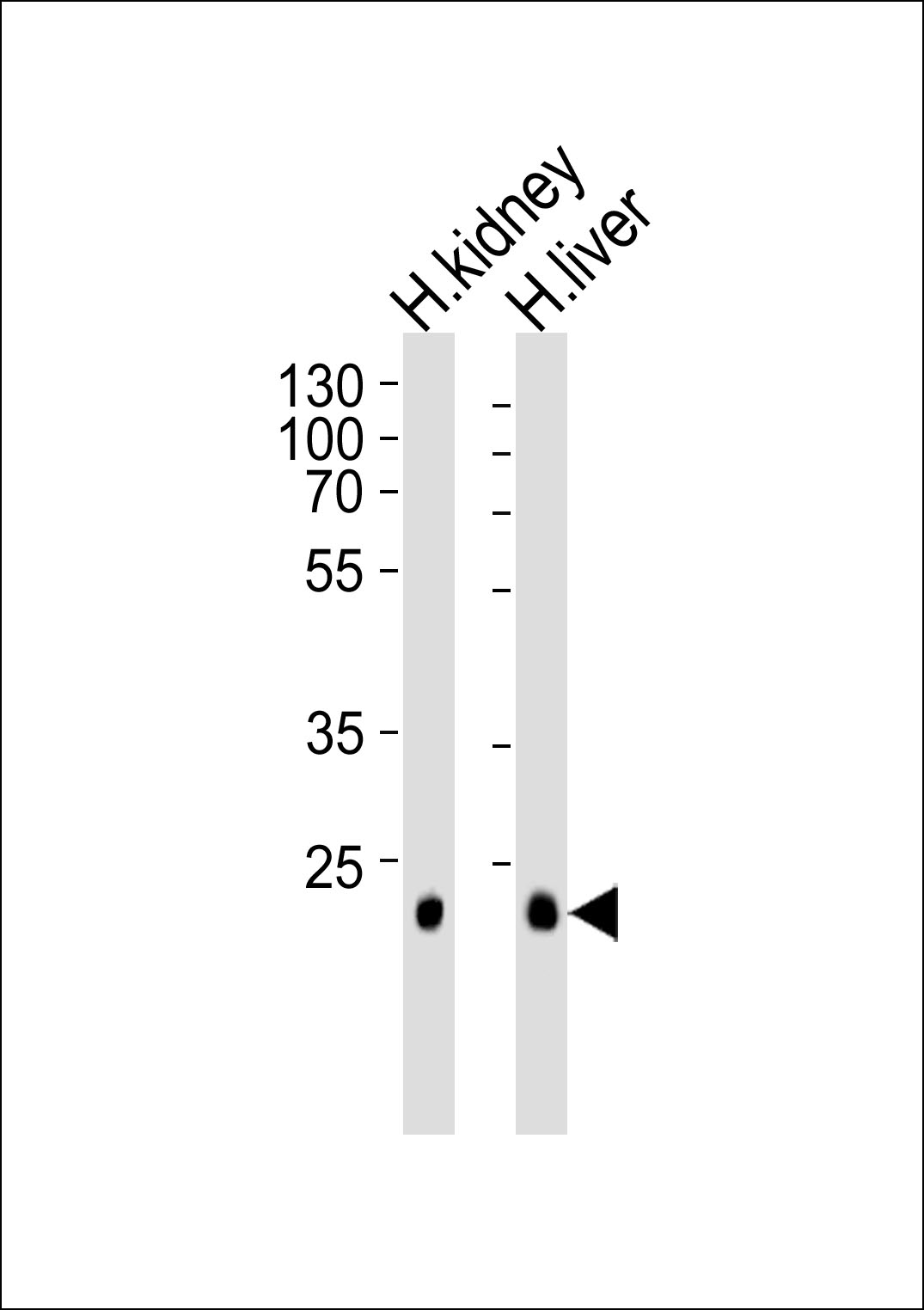CLDN14 Antibody (C-term)
Affinity Purified Rabbit Polyclonal Antibody (Pab)
- 产品详情
- 实验流程
- 背景知识
Application
| WB, E |
|---|---|
| Primary Accession | O95500 |
| Other Accession | NP_036262.1 |
| Reactivity | Human, Mouse |
| Host | Rabbit |
| Clonality | Polyclonal |
| Isotype | Rabbit IgG |
| Calculated MW | 25699 Da |
| Antigen Region | 172-200 aa |
| Gene ID | 23562 |
|---|---|
| Other Names | Claudin-14, CLDN14 |
| Target/Specificity | This CLDN14 antibody is generated from rabbits immunized with a KLH conjugated synthetic peptide between 172-200 amino acids from the C-terminal region of human CLDN14. |
| Dilution | WB~~1:1000 E~~Use at an assay dependent concentration. |
| Format | Purified polyclonal antibody supplied in PBS with 0.09% (W/V) sodium azide. This antibody is purified through a protein A column, followed by peptide affinity purification. |
| Storage | Maintain refrigerated at 2-8°C for up to 2 weeks. For long term storage store at -20°C in small aliquots to prevent freeze-thaw cycles. |
| Precautions | CLDN14 Antibody (C-term) is for research use only and not for use in diagnostic or therapeutic procedures. |
| Name | CLDN14 |
|---|---|
| Function | Plays a major role in tight junction-specific obliteration of the intercellular space, through calcium-independent cell-adhesion activity. |
| Cellular Location | Cell junction, tight junction. Cell membrane; Multi-pass membrane protein |
| Tissue Location | Liver, kidney. Also found in ear. |
For Research Use Only. Not For Use In Diagnostic Procedures.
Provided below are standard protocols that you may find useful for product applications.
BACKGROUND
Tight junctions represent one mode of cell-to-cell adhesion in epithelial or endothelial cell sheets, forming continuous seals around cells and serving as a physical barrier to prevent solutes and water from passing freely through the paracellular space. These junctions are comprised of sets of continuous networking strands in the outwardly facing cytoplasmic leaflet, with complementary grooves in the inwardly facing extracytoplasmic leaflet. The protein encoded by this gene, a member of the claudin family, is an integral membrane protein and a component of tight junction strands. The encoded protein also binds specifically to the WW domain of Yes-associated protein. Defects in this gene are the cause of an autosomal recessive form of nonsyndromic sensorineural deafness. It is also reported that four synonymous variants in this gene are associated with kidney stones and reduced bone mineral density. Several transcript variants encoding the same protein have been found for this gene. [provided by RefSeq].
REFERENCES
Rose, J.E., et al. Mol. Med. 16 (7-8), 247-253 (2010) :
Thorleifsson, G., et al. Nat. Genet. 41(8):926-930(2009)
Belguith, H., et al. Biochem. Biophys. Res. Commun. 385(1):1-5(2009)
Lal-Nag, M., et al. Genome Biol. 10 (8), 235 (2009) :
Krause, G., et al. Biochim. Biophys. Acta 1778(3):631-645(2008)
终于等到您。ABCEPTA(百远生物)抗体产品。
点击下方“我要评价 ”按钮提交您的反馈信息,您的反馈和评价是我们最宝贵的财富之一,
我们将在1-3个工作日内处理您的反馈信息。
如有疑问,联系:0512-88856768 tech-china@abcepta.com.























 癌症的基本特征包括细胞增殖、血管生成、迁移、凋亡逃避机制和细胞永生等。找到癌症发生过程中这些通路的关键标记物和对应的抗体用于检测至关重要。
癌症的基本特征包括细胞增殖、血管生成、迁移、凋亡逃避机制和细胞永生等。找到癌症发生过程中这些通路的关键标记物和对应的抗体用于检测至关重要。 为您推荐一个泛素化位点预测神器——泛素化分析工具,可以为您的蛋白的泛素化位点作出预测和评分。
为您推荐一个泛素化位点预测神器——泛素化分析工具,可以为您的蛋白的泛素化位点作出预测和评分。 细胞自噬受体图形绘图工具为你的蛋白的细胞受体结合位点作出预测和评分,识别结合到自噬通路中的蛋白是非常重要的,便于让我们理解自噬在正常生理、病理过程中的作用,如发育、细胞分化、神经退化性疾病、压力条件下、感染和癌症。
细胞自噬受体图形绘图工具为你的蛋白的细胞受体结合位点作出预测和评分,识别结合到自噬通路中的蛋白是非常重要的,便于让我们理解自噬在正常生理、病理过程中的作用,如发育、细胞分化、神经退化性疾病、压力条件下、感染和癌症。







